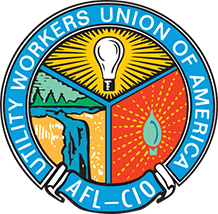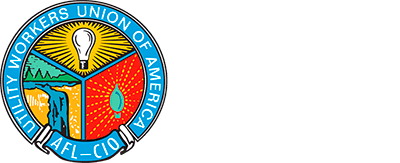A recent incident at one of our locals led the Safety Committee to review certain employer practices. After benchmarking best practices, policies and procedures to help safeguard members with Subject Matter Experts (SMEs) from around the country, we discovered there were a number of OSHA standards and industry practices that were not being followed by the utility.
Meters spinning vs. safety
In the company’s desire to keep meters running to make money, we found our members were not being supervised correctly. They were being pushed to get jobs done quickly, rather than taking the time to do them safely.
UWUA safety representatives got involved in the Occupational Safety and Health Administration (OSHA) investigation and helped educate the inspector about our work and industry safety practices.
Most OSHA inspectors do not know the utility business. As a result, they rely on the company for information, which more times than not, blames workers for safety violations. The company may tell them, “We do everything right,” and, “This was a willful act by an employee out there being a cowboy, breaking the rules.” That may, or may not, be true. Our safety representatives hold everyone accountable.
Benchmarking procedures and safety
By working with the UWUA safety committee, employers can benchmark with other utility companies on work procedures and safety standards. Our safety representatives at the local, regional and national levels are networked to share their experiences and best practices nationally.
When there is an incident, one of the benefits of the National Safety Committee is to review the incident to see why it happened, make corrections wherever necessary, relay the information back to the local, and then share that information nationally to give everybody a better awareness of where safety gaps might exist.
One of the things we encourage our local safety committees to do is review their company’s policies and procedures and compare them to OSHA standards to see if the employer is in compliance with them.
Through this process, we have discovered gaps and flaws in company safety systems. We then utilize our local committees to address these flaws and gaps and make changes to bring them into compliance with OSHA standards and align them with industry standards.
A common denominator in most of the incidents we have investigated as a committee is the lack of proper job briefings. Job briefings are required by OSHA to ensure workers review the work assignment and talk about the hazards of the job.
If the company sees a job briefing is filled out on paper or on the computer, that’s all they want to see. This can lead to “penciling in” and sometimes complacency. Our union safety representatives focus on properly training members on how to correctly conduct a job briefing.
Don’t just fill out a piece of paper. Walk the job, look for the hazards, discuss what the hazards are and how to mitigate them.
Five parts of job briefing
Before each job begins, five things have to be covered in a job briefing.*
In assigning an employee or a group of employees to perform a job, the employer shall provide the employee in charge of the job with all available information that relates to the determination of existing characteristics and conditions of electric lines and equipment that are related to the safety of the work to be performed.
Before work on or near the lines or equipment is started, the employer shall ensure that the employee in charge conducts a job briefing. The briefing shall cover at least the following subjects: hazards associated with the job, work procedures involved, special precautions, energy-source controls, and personal and protective equipment requirements.
While prejob safety briefings are required in the power generation, transmission, and distribution industry and are foundational to achieving desired safety outcomes for employers regulated by this vertical standard, prejob safety briefings also have a critical safety application in other industries such as gas and water, as a best safety management practice.
The prejob safety briefing communicates specific risks to employees, ensuring that hazards are effectively recognized and controlled before the task begins. Any organization, regardless of industry, can benefit from adopting a prejob safety briefing process to measurably enhance worker safety engagement. When employees actively participate in the prejob safety briefing process, it’s more likely that everyone on the job site will go home safely.
*OSHA job briefing standards for electric power generation, transmission, and distribution (1910.269)

